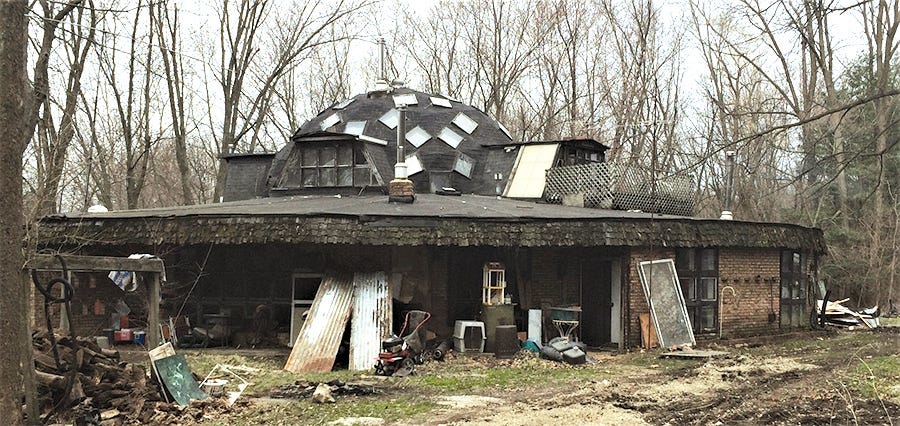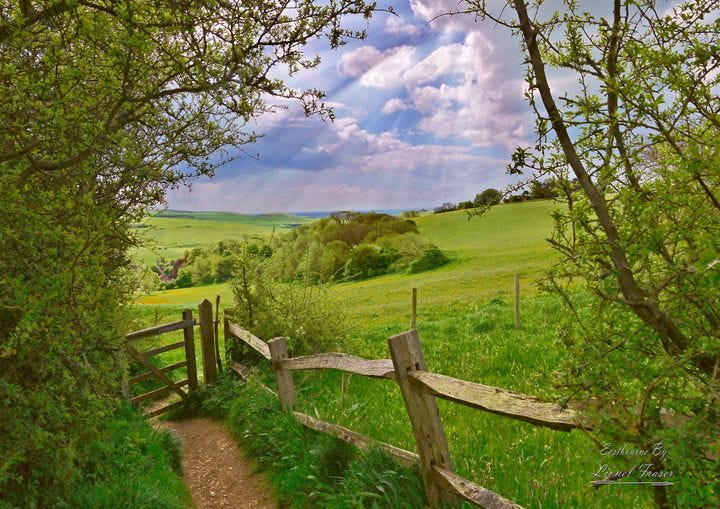
A map of the world that does not include Utopia is not worth even glancing at, for it leaves out the one country at which Humanity is always landing. —Oscar Wilde
Another world is not only possible, she is on her way. On a quiet day, I can hear her breathing. —Arundhati Roy
Maybe you remember: In the spring of 2020, in the midst of pandemic death, we experienced the Great Silence.
And we were granted a vision — actually, two—at least for a time.
In our first shared vision, people in the cities of northern India saw once again, after many years, the mountain ranges of the Himalayas. Citizens of Venice saw their canals running a clear blue-green, with magical spottings of dolphins reported in the port. Worldwide, as our cities lost much their lethal haze, the expressways became nearly empty, while people strolling in the parks suddenly noticed birds singing again.
We were also granted a political vision in a global walkout over the killing of George Floyd and a cry to address systemic, institutionalized racial violence. Tens of millions in over sixty cities, gathered in search of a new common vision.
Unimaginable, unthinkable things occurred as part of the Great Silence which settled over us for several weeks during those weeks.
We have long had words for our best visions. We once spoke of the Blessed Community and Shalom.
Until the arrival of the coronavirus in late 2019, however, we did not invoke these visions very often — or not often enough. Why so?
After a half-century of Cold War, succeeded by several decades of Culture War, we’ve tended to shy away from such “utopian” phrases. They smack of social engineering, we’re told, and can lead to dire totalitarian outcomes — like the Soviet Gulag or Chairman Mao’s Great Leap Forward.
In my lifetime, many millions of dollars have been spent on a kind of “long march through the institutions”, not toward some socialist scheme (as the leftist author of that phrase, 1960s activist Rudi Dutschke hoped for) but on behalf of a desiccated, dystopian public philosophy aimed at diminishing the public realm — i.e., neoliberalism, the very economic air we breathe, our substitute for any civic faith we might have once held.
As a result, even our imaginations have been privatized, enclosed like the English commons in the 18th century. After all, what worse way to have your ideas dismissed than to be called “utopian”? Wake up, we’re told: this is no time for dreaming and ideas that “don’t work”.
On the latter point, social theorist Michel Bauwens recently observed that “utopias as blueprints are not meant to ‘work’: they are meant to inspire new imaginaries, and they have been quite influential historically because imaginaries create new human desires and actions.”
As a lesson learned in the time of coronavirus, utopia as a method can be nothing less than a vaccine to restore our souls to health.
Then exactly which utopian blueprints appear to be “working”? The ones which are being used to create something successful and of obvious value. Yet we are only now beginning to find a language to describe these experiments.
So, in hopes of clarifying things, let’s adopt a different and wonderful word here, one which describes this type of activity, its champions, and its real-world impacts. Let’s describe them all as eutopian, as defined by the Oxford English Dictionary (2nd edition, 1989):
Eutopia, a place of ideal well-being, as a practical aspiration (compared with utopia as an impossible concept).
This insertion of the Greek prefix eu- for “good”, you notice, gets us from u-topia (“no place”) to eu-topia (“good place”), along with a connotation of practicality.
Hereafter we’ll use these terms in a slightly contrasting way: utopia is the conventional term, sometimes applied prejudicially though not here. Eutopia is our focus here, in hopes of investing it with a new “soulforce” and meaning amidst our current stagnation of thought. (“There has been much freedom of thought lately,” Simone Weil once commented , “but very little thought.”)
Thus more is needed here, as I hinted in a sneak preview here a few weeks ago:
Sailing to Eutopia; FPR's Jeff Bilbro; Voices of Decentralism
Great news! I’m sailing to Eutopia (which, please note, is a different destination than Utopia) I’m very interested in how we can relearn the practice of “forward dreaming” again. It will require unlearning, of course After all, even our imaginations have been privatized, as I plan to argue in this new maybe-a-book project I’m calling “
We need to ask what it means to think like a Eutopian (which will be the topic for a forthcoming Chapter 1 of this essay). It means, among other things, moving from a fear-based and ideological sense of the universe to a non-ideological, even improvisational sense of the pluriverse, i.e., the multipolar world of different cosmologies. More on the pluriverse later.
A balanced Eutopian view of the world does not overlook the history of dystopias nor their lessons. Chapter 2 will consider models of both the Old Dystopia and the New Dystopia before reflecting on the sociological project known as “Eutopia as method”.

Eutopian thinking, moreover, is commons oriented and thus Chapter 3 will describe the New Commons, actually, our new understanding of the historical commons and what the activity of commoning means. True Eutopians are instinctive commoners.
We also need to grasp and then recover the idea of the city as a commons. But that means acquiring a vision of the New City altogether (Chapter 4), along with understanding the rise of “fearless cities”, the global movement for municipalism, and a vision of the city as platform for commoning.
Developing a Eutopian sense of citizenship requires reflection on the nature of the New Citizen (Chapter 5), including ideas of world citizenship, “bare citizenship,” etc. In this section, we will try to imagine what a Eutopian politics could mean.
In Chapter 6, I will describe one compelling movement toward Eutopia which can be found flourishing today in those South American cultures which have embraced the concepts of Buen Vivir, an indigenous philosophy of localized right living.
Finally, Chapter 7 will be a collection of Eutopian visions, from a varied mix of practitioners with stories to tell. These are visions of a new politics, a new society, and even a new (to some, at least) way of living together, inspired by concepts such as conviviality and buen vivir.
Finally, I’d like to note a curious thing about the geographical “field” to which this little book will be a guide. The sites I used as examples are mostly Midwestern — indeed, taken from around the state of Indiana, perhaps oddly. When I began to write, I had no sense of what Rebecca Solnit (a writer we’ll return to shortly) wonderfully terms “the faraway nearby” until a visit to the Indiana Dunes led me explore some local history. The Dunes then led me to Gary, which led me to New Harmony, and finally to the Eugene V. Debs Museum. Somehow I found most of the sites I needed, just outside my doorstep.
More to come on all this.
See you next time—peace.






Looking forward to this book!
Do you know about Zion Illinois?